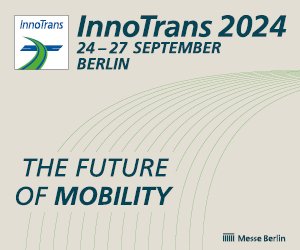Telmo Giolito Porto*
The new regulatory framework for railways has been the subject of attention in the media in recent months, either for the functional model itself, or its implications for the progress of the PIL-Programa de Integração Logística (Logistics Integration Program), by which the federal government will provide Brazil with the necessary infrastructure for realizing to the full potential of our national development.
Valor Econômico recently published two texts dealing with the subject from the legal perspective. It is vital for us to have law firms striving to contribute on relevant subjects for the country and their clients.
However, it seems the subject should be reviewed from an operational perspective.
The model, which is subject of Decree 8.129/2013, already approved by TCU, divides railway operation into two hemispheres: On one hand, the concessionaire of the track, which is responsible for the construction, renovation, expansion, and maintenance of the permanent way and its infrastructure (rails, sleepers, ballast, subgrades, drainage, bridges, viaducts, level crossings, etc.), as well as the deployment of the signaling system and the operation of the OCC – Operational Control Center. Other necessary activities should also be the responsibility of the concessionaire, including: rescue of damaged trains and track release, urgent or smaller mechanical repairs, approval of equipment and crew. On the other hand, we have many logistics operators. Between the two hemispheres, a company under public control acquires from the concessionaire the ability to transport through the track (i.e., intervals between trains) and auctions it for interested operators.
This model is nothing fancy, a very similar system is already used in other countries, as Spain. In relation to the current model, where the same concessionaire holds the tracks and the rolling stock, the advantage is that it avoids conflicts of interest between transport supply and domain of tracks, reflected in the reduction of freight rates, due to an increased competition and the lack of any links between the national flows and the business interests of concessionaires. Moreover, it is also very similar to the road model, in which a concessionaire is responsible for the roads and several owners are responsible for the vehicles.
Many concerns have been raised regarding this issue, as: The treasury will have a loss when purchasing the capacity of railways, because of the idleness in some sections; the state company will not have financial or managerial capacity to play its role, and finally the difficulty of coexistence of the two concession models.
The new model will not be deployed at the same time in all present and future railway network. The cost of idleness can be mitigated by prioritizing the most attractive sections, whose operation will support the initial period of less demanded sections. Furthermore, within each section granted there will be sections with higher and lower demand, so the curve of growth of demand for secondary segments can be supported by the others.
To imagine that Brazil cannot guarantee financially the model or that we do not have technicians able to deploy it is to underestimate our resources. The amounts involved are a relatively negligible percentage in terms of the National Budget. And that is not all: the warranty structure through Treasury securities totaling USD 6.4 billion, guarded by financial institutions as trustees and directly accessible to concessionaires, is already being studied.
The federal government has under direct administration, through its agencies and companies, a very capable personnel, with experience or newly recruited young people from excellent schools and training programs. Brazil can prioritize what we want. In Social Accounting, the gains of changing the railway model – in terms of increase in national income – outweigh its costs. Even more if we calculate the reduction of freight fares multiplied by the volume of exports of our commodities. Brazil’s challenge is the challenged of the international productivity and competitiveness.
Finally, we should ask: what prevents the coexistence of two concession models until the current concessions expire? In the sanitation sector, which is equally vital for the country, we have several cases of contracts with deployment occurring in parts, as earlier partial concessions expire. Ultimately, the compensation for the remaining term of former concessionaires could be a requirement for new concessionaires. However, such an extreme solution does not seem necessary at all. ANTT-Agência Nacional de Transportes Terrestres (National Ground Transportation Agency) must act as an agency and regulate the relationship between old and new concessionaires, in order to reconcile flows in yards of contact. For all we know, ANTT is already taking this way.
Recent success cases in the highway concession, with significant discounts compared to the maximum rate, show that there is room for reducing costs and increasing the supply of transportation in Brazil.
The simple action of walking forward requires balance, the ability to support the whole body on one foot. The title of this article illustrates that, without boldness and determination, it is not possible to create a new best. There was a time, in the late nineteenth century, where people used to say that the increasing speed of trains would prevent passengers from breathing. Imposing to the future the constraints that exist in the present does not help the railroad, or Brazil.
* Telmo Giolito Porto is professor doctor of Escola Politécnica da USP.


Seja o primeiro a comentar